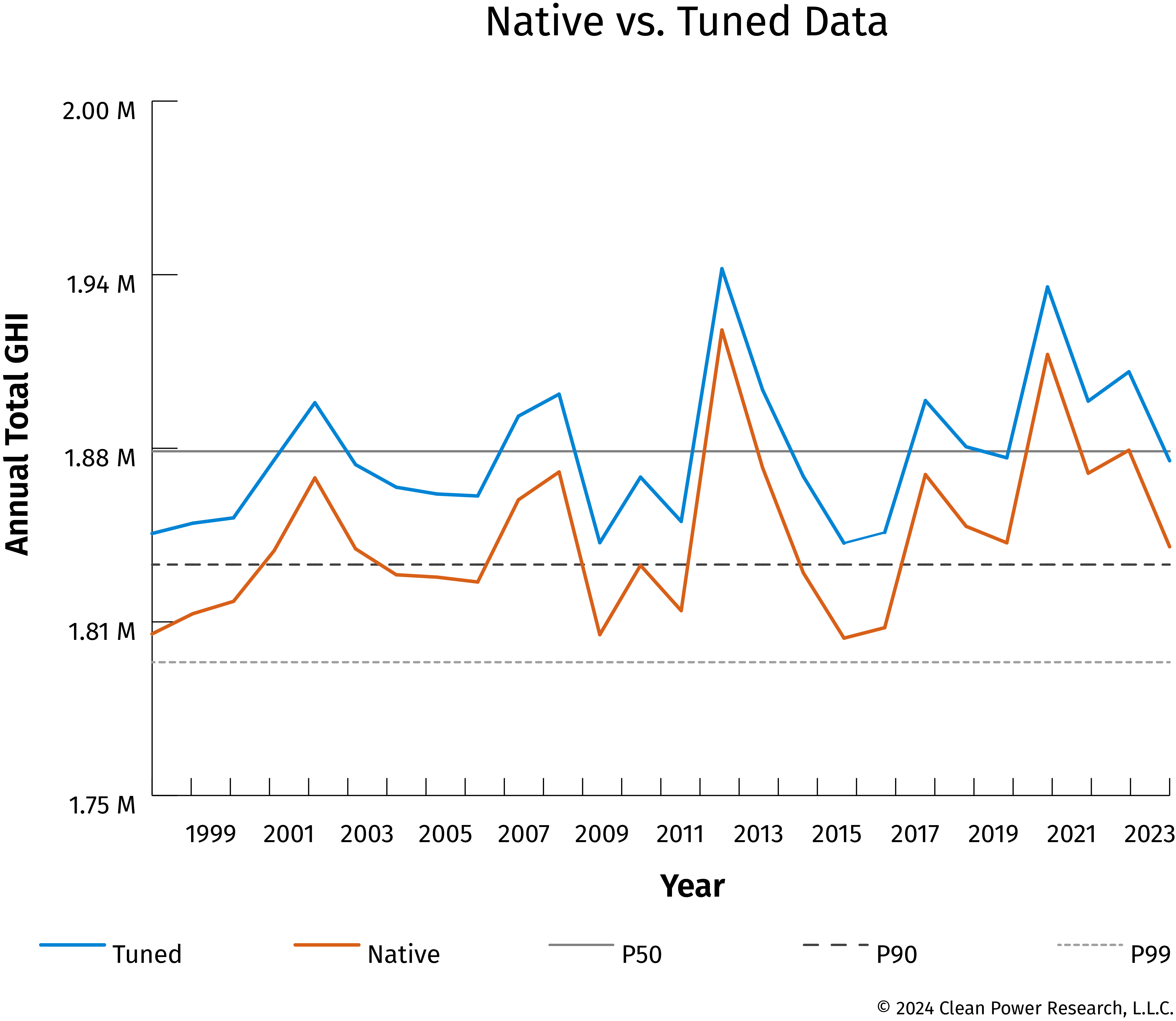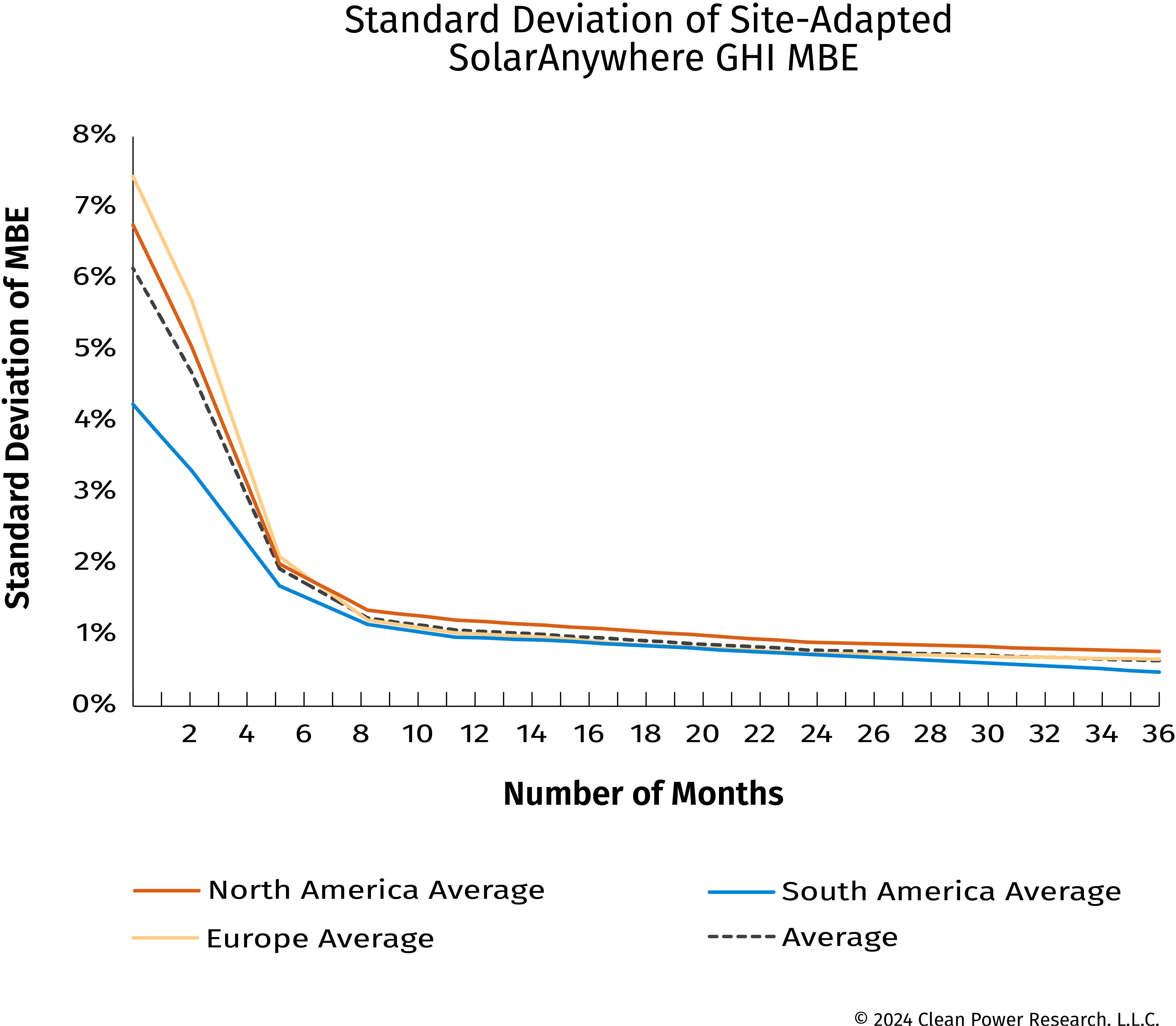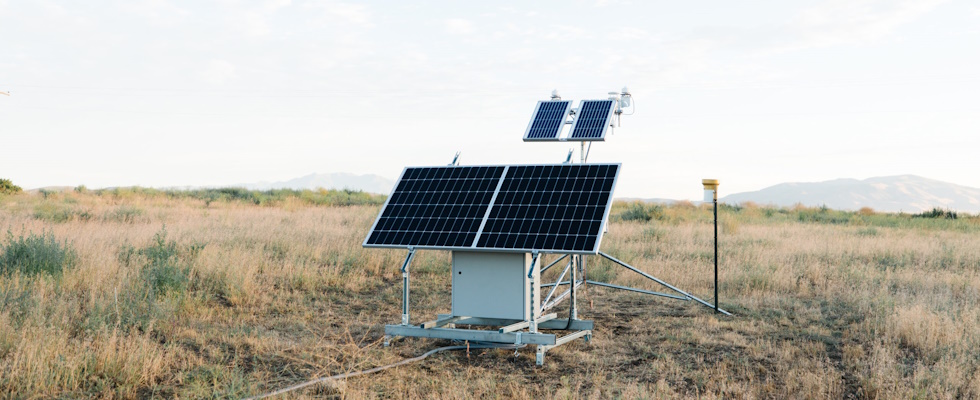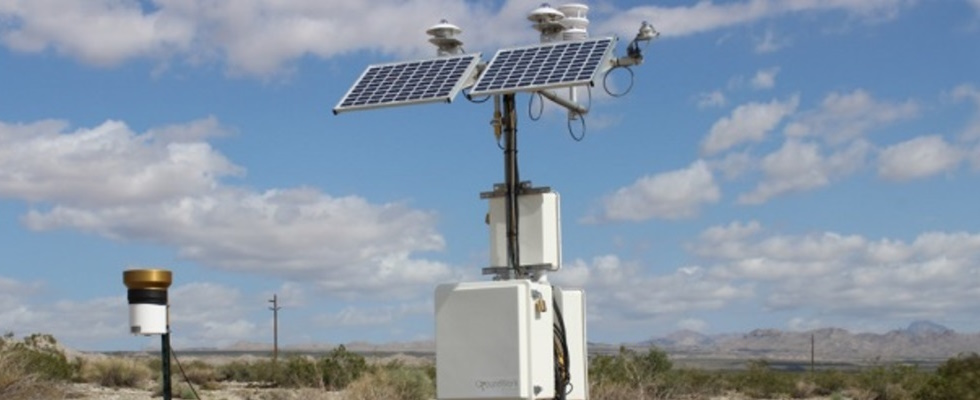Site-Adaptation (Ground-Tuning) Studies
Reduce solar energy yield assessment uncertaintySolarAnywhere Site-Adaptation Studies
Combine the site specificity of ground station measurements with the interannual insights of long-history satellite-based SolarAnywhere data
Solar meteorological (MET) station measurements and satellite-based data each have their distinct advantages. With a site-adaptation (ground-tuning) study, PV project engineers can access the benefits of both data sources to reduce solar resource risk and increase yield assessment accuracy.
Satellite-based SolarAnywhere irradiance data offers the long-history (25+ year) insights required to assess interannual variability and probability of exceedance levels. Ground station measurements offer increased site-specificity, especially if meteorological instruments are well-maintained.
Tuning SolarAnywhere data with high-quality, ground-measured data results in a solar resource dataset with lower uncertainty and bias than either source independently.
Utilizing SolarAnywhere satellite-based data and at least 12 months of ground measured reference data, it is possible to achieve a site-adapted data uncertainty as low as 1.2%.1
1Read the research paper or explore our Methodology section to learn more.
Why SolarAnywhere
Trusted Tuning Methodology
Account for site-specific clear sky bias and seasonal variation; KSI goodness-of-fit test and dual sliding window corrections.
Quick Turnaround
Typically completed in 10 business days or less.
Expedited studies available. For more information, contact us.
Bankable
Minimize resource risk and obtain the best terms for project financing with reports that are recognized by all major banks and independent engineers.
Cost Effective
SolarAnywhere site-adaptation studies pay for themselves in reduced solar resource uncertainty and project risk.
Industry Expertise
Exclusive partnership with Dr. Richard Perez. In-house research team. Every study reviewed by a Clean Power Research data quality engineer.
Long-Term Insights
Assess interannual variability with 25+ years of time-series data (1998-present).
What Your Site-Adaptation Study Includes:
Solar resource assessment report
- A bankable report characterizing solar resources and uncertainty for your project
- Comparative metrics between your ground data and SolarAnywhere’s satellite-derived irradiance dataset
Solar resource data files tuned to your ground measurements
- 25+ years of time-series data (1998–present) at a temporal resolution of up to 15 minutes, spatial resolution of 1 km
- Typical GHI Year
- Typical DNI Year

In this example, the native solar data had a negative bias and the final yield was corrected to be approximately 1.61% higher.
Site-Adaptation Methodology
Interested in learning about the SolarAnywhere site-adaptation methodology? Select the “+” button to read more.

Utilizing SolarAnywhere satellite-based data and at least 12 months of ground measured reference data, it is possible to achieve a site-adapted data uncertainty as low as 1.2%1.
SolarAnywhere site-adaptation studies employ a tuning methodology that combines at least 9–12 months of ground-based measurements (GHI, wind speed, temperature) with long-term SolarAnywhere time-series irradiance data. Using the overlapping period of ground measurements and SolarAnywhere satellite-derived data, SolarAnywhere analysts and engineers correct for observed clear sky bias and seasonal variation.
Cumulative distribution between the two datasets is further decreased through a goodness-of-fit test and dual sliding window corrections. These adjustments are applied across the entire historical SolarAnywhere GHI dataset, producing tuned time-series data from 1998–present for solar resource assessment and financing.
Customer Story
GroundWork Renewables Partnership
High-quality MET station data is critical to site-adaptation studies as the accuracy of your ground measurements directly impacts the accuracy of the study. This is why SolarAnywhere is proud to partner with GroundWork Renewables due to their gold-standard ground data program.
Contact GroundWork Renewables to obtain the highest quality ground solar data.
Partner Perk: Your site-adaptation study is automatically expedited (typically completed in 5 business days or less) when you use GroundWork as your on-site data source.
Support Center
Site-Adaptation (Ground-Tuning) Services
Research
Reducing Solar Project Uncertainty with an Optimized Resource Assessment Tuning Methodology
Webinar
The Importance of Data Quality for Reducing the Uncertainty of Site-Adapted Solar Resource Datasets

Frequently Asked Questions
Additional questions? Visit our FAQ page for more answers to commonly asked questions or contact us.
What is a site-adaptation study?
A site-adaptation (ground-tuning) study is a service that utilizes both on-site measurements and long-history solar resource data to create a site-specific, long-term dataset with reduced yield assessment uncertainty.





